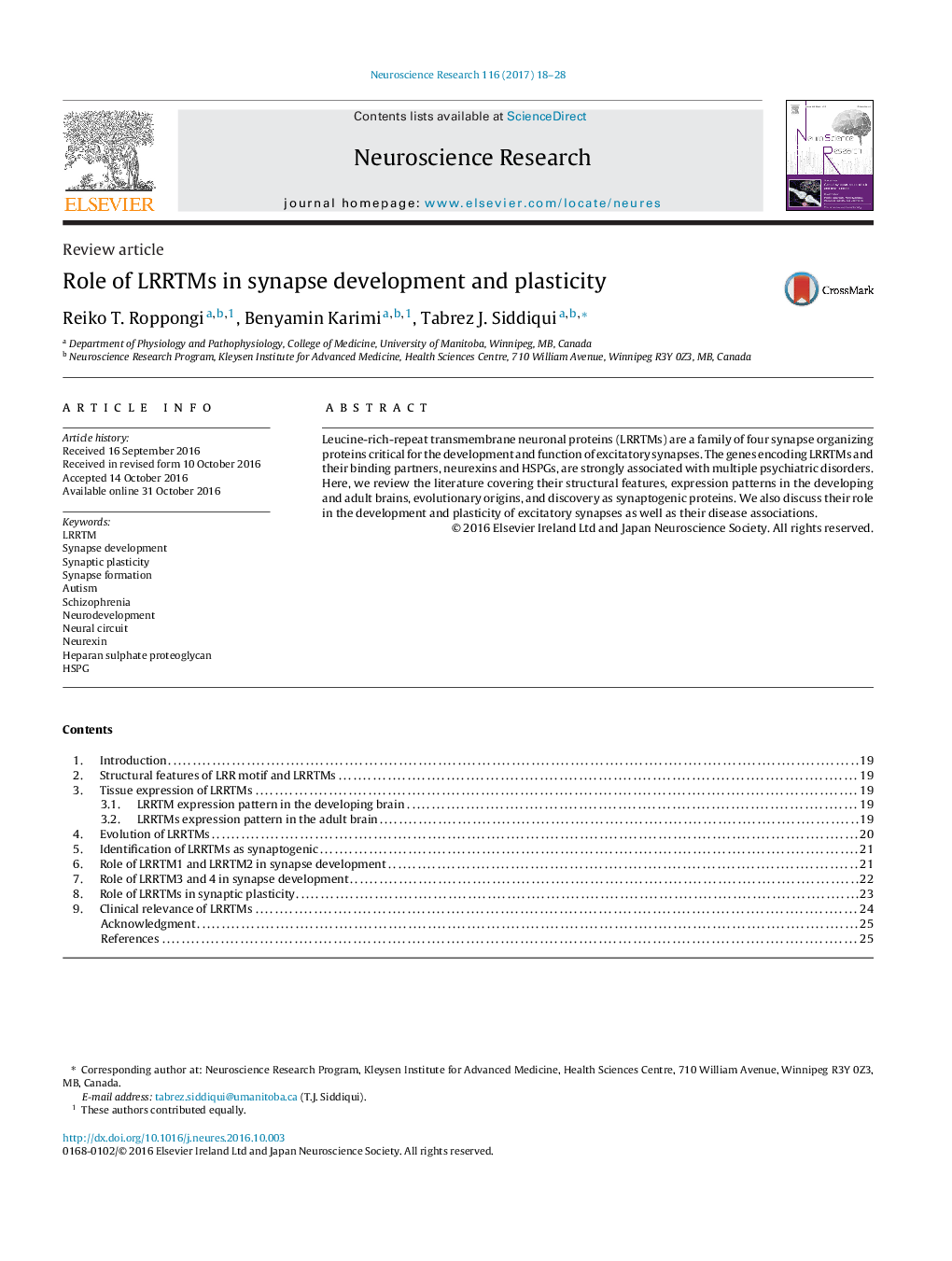| کد مقاله | کد نشریه | سال انتشار | مقاله انگلیسی | نسخه تمام متن |
|---|---|---|---|---|
| 5738997 | 1615267 | 2017 | 11 صفحه PDF | دانلود رایگان |

- LRRTMs are an emerging family of postsynaptic synapse organizing proteins.
- They are strongly associated with neuropsychiatric disorders.
- They bind to presynaptic neurexins and heparan sulphate proteoglycans.
- They mediate excitatory synapse development without affecting inhibitory synapses.
- They are required for synaptic plasticity, particularly long-term potentiation.
Leucine-rich-repeat transmembrane neuronal proteins (LRRTMs) are a family of four synapse organizing proteins critical for the development and function of excitatory synapses. The genes encoding LRRTMs and their binding partners, neurexins and HSPGs, are strongly associated with multiple psychiatric disorders. Here, we review the literature covering their structural features, expression patterns in the developing and adult brains, evolutionary origins, and discovery as synaptogenic proteins. We also discuss their role in the development and plasticity of excitatory synapses as well as their disease associations.
Journal: Neuroscience Research - Volume 116, March 2017, Pages 18-28